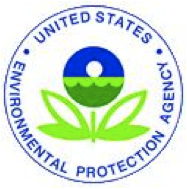The following information has been provided to the CAG by US EPA:
US EPA physical offices in NYC remain closed due to impacts from Hurricane Sandy. All information on Newtown Creek will be provided to the CAG via this website for dissemination. Additional information is posted here, a new page on the Newtown Creek CAG website that houses Hurricane Sandy information.

Hurricane Sandy – Newtown Creek Area Assessments of Storm Damage and Preparation for Inclement Weather
November 5, 2012
In support of FEMA and the state of New York, the U.S. Environmental Protection Agency sent a team of technical experts to investigate the Newtown Creek Superfund site to assess damage from Hurricane Sandy and any potential environmental impacts. On October 29, 2012, during Hurricane Sandy, some buildings in the area of Newtown Creek on the border of Brooklyn and Queens, New York experienced flooding. The water receded after the storm.
Newtown Creek is contaminated by pesticides, metals, PCBs and volatile organic compounds from many years of industrial discharges and spills. The site was added to the federal EPA Superfund list of the nation’s most contaminated sites in September 2010.
Assessment teams performed inspections of the creek and the shoreline for potential impacts and the information is being used to determine if additional actions are needed to protect people’s health and the environment. In addition, community outreach specialists met with representatives of the Community Advisory Group, the Newtown Creek Alliance, and inspected area buildings, streets and parks. The community involvement team also provided information about best practices for cleaning up following flooding, dealing with mold and the safe disposal of household hazard waste.
The site assessments located a pocket of oil on land near English Kills, NY. Teams located and documented 27 orphan containers. The team also noted a home heating oil tank and a propane tank along the banks of the creek. Continued assessment and removal of these containers will be ongoing and will include the use of sonar to determine if any containers or drums were pulled into the creek by the storm.
The removal of orphan containers began on Monday, November 5, 2012. However, there is more inclement weather predicted for later this week. Please prepare for the potential for further flooding and strong winds.
If your building experienced flooding near Newtown Creek during the storm, there are simple steps to follow in cleaning up:
- Remove or pump out standing water.
- Use bleach to kill germs
- Wear rubber boots, rubber gloves and goggles.
- Open windows and doors to get fresh air when you use bleach.
- Clean hard things with soap and water. Then clean with a mix of 1 cup of household liquid bleach in 5 gallons of water. Use bleach that does not have an added scent (like lemon). Scrub rough surfaces with a stiff brush and air dry.
- If you don’t have household liquid bleach, use soap and water.
- NEVER mix bleach with ammonia or other cleaners.
- Wash clothes worn during cleanups in hot water and detergent. These clothes should be washed separately from uncontaminated clothes.
For more information about Hurricane Sandy Response and Recovery, visit http://epa.gov/sandy/.
More information on Mold Cleanup:
http://www.epa.gov/mold/moldresources.html
Household Hazardous Waste Resources:
http://www.dec.ny.gov/chemical/8485.html
2 Comments
Mike Schade · November 6, 2012 at 8:14 pm
Thanks William.
Is EPA going to be conducting any off-site soil testing, to determine whether or not contaminants (metals, PCBs, pesticides, sludge, bacteria, etc.) from the creek migrated onto neighborhing properties as a result of the flooding?
Thank you.
Mike Schade
Mike Schade · November 6, 2012 at 8:14 pm
Thanks William.
Is EPA going to be conducting any off-site soil testing, to determine whether or not contaminants (metals, PCBs, pesticides, sludge, bacteria, etc.) from the creek migrated onto neighborhing properties as a result of the flooding?
Thank you.
Mike Schade
Comments are closed.